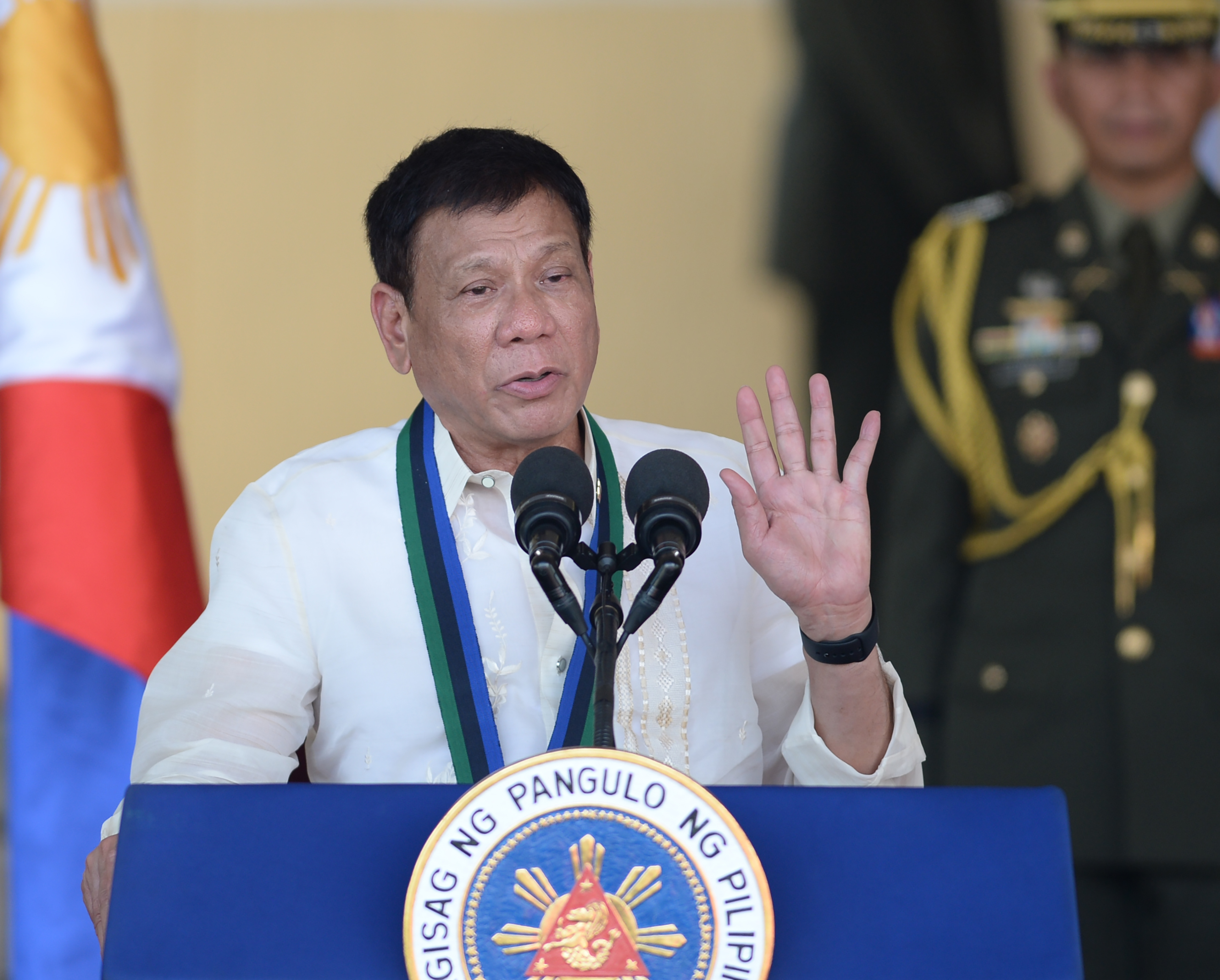
Duterte was sworn in as the Philippines’ president June 30 — and quickly launched a foul-mouthed vow to wipe out drug traffickers and even urged ordinary Filipinos to kill addicts. / AFP PHOTO /
MANILA, Philippines (AFP) — Philippine President Rodrigo Duterte on Sunday vowed to push through with the burial of deposed dictator Ferdinand Marcos at the national “Heroes’ Cemetery” despite threats of protests.
Even though the Marcos years were marked by widespread corruption and rights abuses, Duterte said that as a former president and soldier, the late dictator was qualified to be buried in the special cemetery.
“I will allow him to be buried there. He is qualified to be buried there. If other Filipinos don’t like it, fine,” he said in a pre-dawn speech to soldiers and reporters.
Marcos’s family have kept his preserved body on display after he died in exile in 1989 following a popular revolt three years earlier, demanding that it be buried with full honors in the Heroes’ Cemetery.
Marcos was elected president in 1965 and declared martial law in 1972, allowing him to rule as a dictator while he, his family and allies enriched themselves through massive corruption as his troops brutally stamped out dissent.
But Duterte, who has styled himself as an anti-corruption crusader, defended Marcos, noting that his father had served in the Marcos cabinet and he himself had even voted for Marcos before.
Duterte has previously said that he won the May 9 elections partly with the support of the Marcos family who remain influential in their bailiwick in the northern Philippines.
The Marcos family has made a remarkable political comeback since the death of their patriarch.
The Marcos widow, Imelda, is a congresswoman representing the family’s northern provincial stronghold, while Ferdinand Marcos Jnr narrowly lost election as vice-president in May.
But Rafaela David, spokeswoman of activist group Akbayan Youth, said the organisation would step up its protests against the burial.
“This is the Filipino people saying we do not recognise Marcos as a hero. We have a lot of people who have experience with martial law and are trying to get their stories across… so more people get to know the truth about the Marcos legacy,” she told AFP.
© 1994-2016 Agence France-Presse







